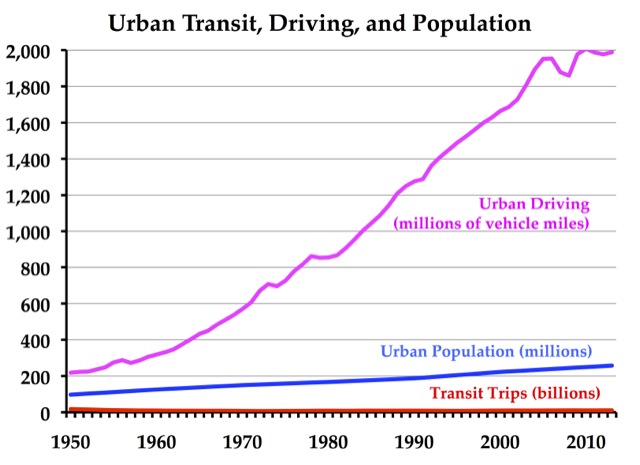At nearly 10.7 billion trips, transit ridership in 2013 reached its highest level in 57 years, says the American Public Transportation Association. This increase shows that people are “saying we want these (transit) investments made,” APTA’s president, Michael Melaniphy, told USA Today. Needless to say, by “investments” he means building new rail transit lines.

Any century now, transit is bound to overtake driving. Source: Transit data from APTA, urban driving from the Federal Highway Administration, and urban population from the Census Bureau. Click image for a larger view.
However, a close look at the data shows something entirely different. It turns out that New York City subways alone were responsible for more than 92 percent of the increase in transit ridership. Nationally, ridership grew by 115 million trips; New York City subway ridership grew by 106 million trips. According to the New York Times, the growth in subway ridership resulted from “falling unemployment.”








